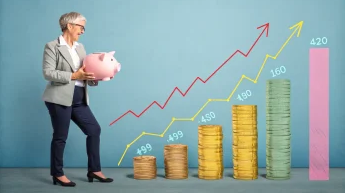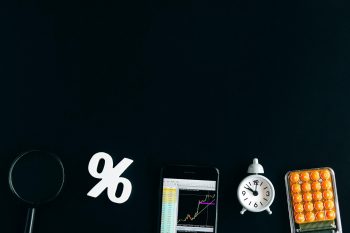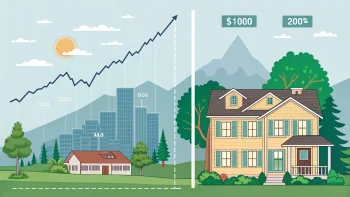Dividends have long been a crucial component of stock market returns, often accounting for a significant portion of total gains. Historical data shows that dividends have contributed around one-third of the overall return from the stock market. This staggering figure highlights the integral role that dividends play in building wealth over the long term.
Despite this, many investors remain largely unaware of the power of dividends or have yet to incorporate them into their investment strategies. Hence, this article will explore a low-risk approach to building a dividend-focused portfolio.
Table of Contents
ToggleDefinition and How Dividends Work
Dividends are payments made by a company to its shareholders out of its profits. When a company earns a profit, it can either reinvest it into the business or distribute it to shareholders as dividends. Not all companies pay dividends, but those typically pay them regularly, like quarterly.
The key is that dividends provide shareholders with a direct return on their investment, separate from any potential gains (or losses) in the stock price. This makes dividends an appealing source of ongoing income for many investors, although they’re not without risks.
Why Invest in Dividends?
Dividends provide investors with a regular cash flow, regardless of what’s happening in the broader stock market. This consistent income stream can be particularly valuable during periods of market volatility, as the dividend payments help offset any declines in the stock price.
Over time, the power of compounding dividends can be a significant driver of wealth creation. When dividends are reinvested, the returns can snowball, leading to impressive long-term gains. This makes dividends attractive for those seeking a low-risk approach to investing and building long-term wealth.
Dividend-paying companies tend to be more established, financially stable firms. This makes them less susceptible to the wild swings that can occur with more speculative, non-dividend-paying stocks. Therefore, dividends can provide a measure of downside protection for an investment portfolio.
Dividends can also help offset the eroding effects of inflation. As the cost of living rises, the income from dividends can help maintain the purchasing power of an investor’s portfolio, making dividends an effective hedge against inflation.
Depending on an investor’s tax situation, dividends may receive preferential tax treatment compared to ordinary income, further enhancing their appeal. This additional tax advantage can contribute to the overall attractiveness of a dividend-focused investment strategy.
Having a consistent stream of income can also allow you to take out a loan even if you have bad credit and have access to more flexible financing options, at least when compared to your peers who depend on a single, bi-weekly payment schedule.
Dividend Investing Vs. Price Appreciation
Beginner investors often think that the price of a stock going up means their dividends will also increase. Contrary to popular belief, these two actions have no correlation, as dividends are profits paid out to the shareholders by the volition of the board. So, which aspect of a stock should you hinge on more—price appreciation or dividend yields?
Price Appreciation
Price appreciation refers to an increase in the value of an asset over time and it means there’s increased demand for the stock. Relying on the price going up appeals to investors looking for growth and are comfortable with higher risks. The potential for significant returns is higher with price appreciation, especially in growth-oriented sectors like technology or innovative industries.
However, one also has to time the market, take volatility into account, and come to terms that there will be no passive income—a stock only yields income once it is sold. Avoiding that is only possible through advanced options trading strategies, but even that’s not ideal, since you won’t be owning the stock and will be ineligible to receive dividends.
Dividends Investing
Since dividends are payments a corporation makes to its shareholders, they don’t depend on the stock price. Yes, an increase in dividends might coincide with the stock price going up, signifying good financial performance. Still, it can also be a sign of fiscal irresponsibility and the board not knowing what to do with the excess cash.
Moreover, stocks that pay dividends can provide a steady income stream regardless of market conditions, which appeals to investors seeking lower risk and steady income, such as retirees. These stocks may not offer dramatic price appreciation but are more stable during market downturns.
Strategies For Building A High-Yield, Low-Risk Dividend Portfolio
The choice between investing for price appreciation and dividends largely depends on an individual’s financial goals, risk tolerance, and investment timeline. If you want to take the dividends route, here are some strategies to get you started:
Diversification Across Stocks and Sectors
Diversification is crucial when building a dividend portfolio to mitigate risk. Avoid concentrating your investments in just a few stocks or sectors, as that leaves you vulnerable to the underperformance of any individual holding.
Instead, aim to spread your capital (no more than 25% of your portfolio per sector) across a variety of high-quality, dividend-paying companies from different industries.
This could include sectors like consumer staples, healthcare, utilities, financials, industrials, and others. By diversifying, you create a less susceptible portfolio to the volatility that can plague any single stock or sector. This helps ensure your dividend income stream remains stable and less prone to interruption, even during market downturns.
Focus on Stable Dividend Payers
When selecting dividend stocks, prioritize companies with a long, proven track record of paying and increasing their dividends over time. These are often well-established, financially sound businesses that have demonstrated their ability to generate consistent cash flows to support shareholder distributions.
Companies that have raised their dividends for 25 consecutive years or more, known as Dividend Aristocrats, are particularly attractive as they have shown a strong commitment to rewarding shareholders. Investing in these reliable dividend payers can provide a solid foundation for your portfolio, as they tend to be less volatile and more resilient during market turbulence.
Avoid the Highest Yields
While high dividend yields may seem enticing, they can sometimes be a warning sign. Extremely high yields may indicate that the market is pricing in concerns about the company’s ability to sustain the dividend payout.
These elevated yields could be a sign of financial distress or an unsustainable dividend in the long run. Instead, aim for a more moderate yield range of 3-5%, providing a meaningful income stream without exposing you to undue risk.
However, it’s important to keep the big picture in mind. Simply comparing dividend payments or yields doesn’t actually let you earnestly compare two stocks or ETFs. You’ll also have to consider capital appreciation and long-term growth prospects and be forward-thinking by also taking forecasts into account. While it is a bit of legwork, put all of this in a single document and edit the PDF on a regular (per quarter or at earnings releases) basis.
Remember that companies capable of maintaining dividend growth in this yield range are more likely to be financially stable and able to continue rewarding shareholders over the long term.
Choose Quality Over Quantity
When building a dividend portfolio, it’s better to own a concentrated selection of high-quality, dividend-paying stocks rather than spread your money across many lower-quality names.
Focus on companies with strong balance sheets, consistent earnings, and a demonstrated commitment to returning capital to shareholders through regular and growing dividend payments. These “quality” companies may not offer the highest yields, but their financial stability, competitive advantages, and shareholder-friendly policies make them better long-term investments.
Prioritizing quality over quantity will help you construct a more resilient, low-risk dividend portfolio better positioned to weather market downturns.
Buy and Hold for the Long Term
Dividend investing is a long-term game, and patience is a virtue. Resist the urge to constantly buy and sell your holdings in search of short-term gains. Instead, adopt a buy-and-hold mentality, allowing your dividend-paying stocks to compound over time.
This disciplined approach is key to realizing the full benefits of a dividend-focused strategy. Chasing short-term returns or frequently trading in and out of positions can erode the compounding effect of dividends and incur additional costs that can undermine your long-term performance.
Investing for the long haul allows the power of compounding to work in your favor, driving steady growth in both your dividend income and overall portfolio value.
Reinvest Those Dividends
One of the most powerful tools in a dividend investor’s arsenal is the ability to reinvest those dividend payments back into more shares of the underlying stocks. This compounding process can supercharge your portfolio’s growth over the long run.
Take advantage of dividend reinvestment plans (DRIPs) to automatically reinvest your dividends, allowing you to purchase additional fractional shares without incurring trading commissions.
The power of compounding helps your dividend income grow exponentially, accelerating your portfolio’s wealth-building potential. Reinvesting dividends is a crucial strategy for maximizing the long-term returns of a low-risk, high-yield dividend investment approach.
Common Sources of Dividend Income
When constructing a dividend portfolio, you have several options for acquiring dividends, each with its own characteristics and benefits. Each of these options presents a viable route to building a dividend income stream, with the choice depending on your investment goals, risk tolerance, and interest in diversification:
- Dividend Stocks. These are shares in companies that pay out a portion of their earnings to shareholders regularly. Investors often choose dividend stocks for their potential to provide a steady income stream alongside the possibility of capital appreciation.
- Dividend ETFs. Also known as Exchange Traded Funds, these offer a diversified portfolio of dividend-paying stocks. These funds collect dividends from their holdings and are distributed to ETF shareholders. This method allows investors to diversify their income sources, reducing the risk associated with individual stocks. Dividend ETFs might focus on high-yield dividends or aim for consistent payers, combining the traits of stability and high payouts.
- REITs (Real Estate Investment Trusts). REITs are companies that own or finance income-generating real estate. By law, REITs must pay out at least 90% of their taxable income to shareholders in the form of dividends. Due to this requirement, they often offer higher yields compared to other dividend-paying stocks and ETFs. REITs can be particularly appealing for investors seeking real estate exposure without buying property directly.
How to Select the Right Platform for Dividend Investing
Selecting the right platform for dividend investing is crucial to ensure a seamless and cost-effective experience. With numerous options available, from traditional brokerages to online trading platforms and robo-advisors, it’s essential to evaluate factors such as fees, investment options, research tools, and user experience.
Traditional full-service brokerages may offer personalized advice and comprehensive research but often come with higher fees. Online discount brokers, on the other hand, typically have lower trading costs and provide a wide range of investment products, including individual stocks, ETFs, and mutual funds.
For those seeking a hands-off approach, robo-advisors can be an excellent choice. These platforms use algorithms to create and manage diversified portfolios based on your risk tolerance and investment goals, often focusing on low-cost index funds and ETFs.
While it’s unfeasible for every investment app to present pentesting reports and assurance of how their security is impervious, which means the majority of that responsibility falls upon your shoulders. This means don’t click on every QR code for registration, and most importantly, don’t believe every sponsor plug-in you hear during a YouTube video with dubious financial advice.
Regardless of your chosen platform, it’s crucial to consider factors like account minimums, trading commissions, and the availability of dividend reinvestment plans (DRIPs). Additionally, user-friendly interfaces, robust research tools, and educational resources can be invaluable for both novice and experienced dividend investors.
Key Metrics for Dividend Investing
To effectively assess and manage a dividend portfolio, it’s crucial to understand several key financial metrics that indicate the health and attractiveness of dividend-paying stocks:
1. Dividend Yield
Dividend yield is a simple but crucial metric. It tells you the annual dividend per share expressed as a percentage of the stock’s current market price.
For example, if a stock trades at $50 per share and pays a $2 annual dividend, the dividend yield would be 4% ($2 dividend / $50 share price = 0.04 or 4%). A higher dividend yield generally indicates a stock that pays out more of its earnings as dividends.
When evaluating dividend yields, it’s important to compare them to the average yield of the overall stock market and to other stocks in the same industry. A significantly higher yield may indicate higher risk, while a lower yield could mean the company retains more earnings for growth.
2. Dividend Payout Ratio
The dividend payout ratio looks at the percentage of a company’s earnings paid out as dividends. It’s calculated by dividing the annual dividend per share by the company’s earnings per share.
For instance, if a company earns $4 per share and pays $2 in dividends, the payout ratio would be 50% ($2 dividends / $4 earnings = 0.5 or 50%).
A high payout ratio, like 80% or more, could mean the company uses most of its profits to fund the dividend rather than reinvesting in the business. A lower payout ratio, like 30-50%, may indicate the company is retaining more earnings for growth and reinvestment.
Ideally, you want companies with a sustainable payout ratio that allows for both regular dividend payments and continued business investment.
3. Dividend Growth Rate
The dividend growth rate is a key indicator of the potential for dividend income to increase over time. It is calculated by determining the annualized percentage increase in dividends paid per share over time. Consistent dividend growth can signal a company’s strong financial health and commitment to returning value to shareholders.
4. Total Return
Total return combines the appreciation of the stock price with the dividends received to show the overall return on investment. It provides a complete picture of the investment performance, accounting for both capital gains and income.
Conclusion
Dividend investing can be a powerful strategy for generating passive income and building long-term wealth. While it may not be as exciting as chasing the next hot stock, a well-constructed dividend portfolio can provide a reliable income stream and potentially achieve respectable capital appreciation over time.
It’s important to remember that dividend investing is not a get-rich-quick scheme. It requires patience, discipline, and a long-term mindset.
Featured Image Credit: Ann H.; Pexels

















